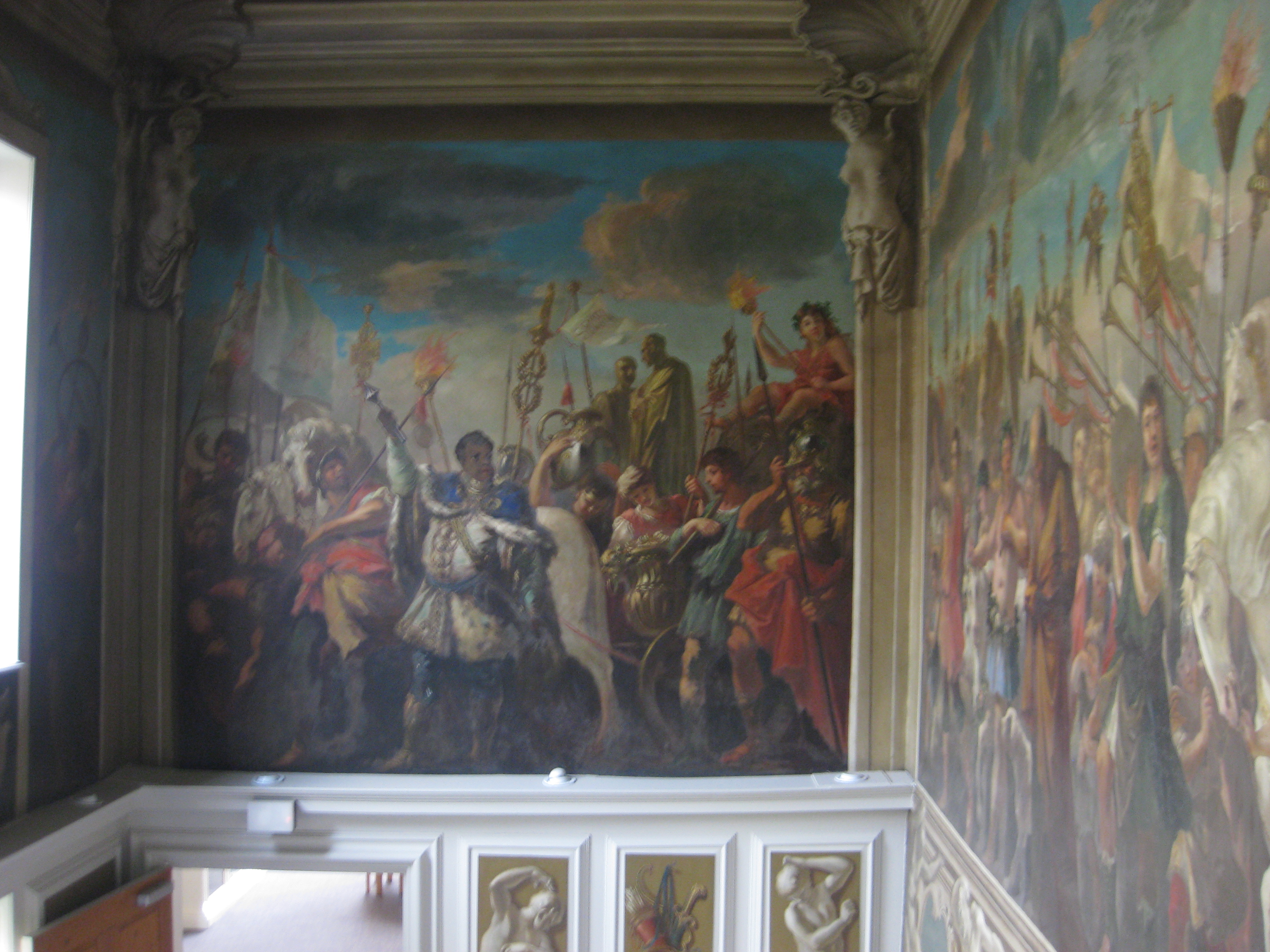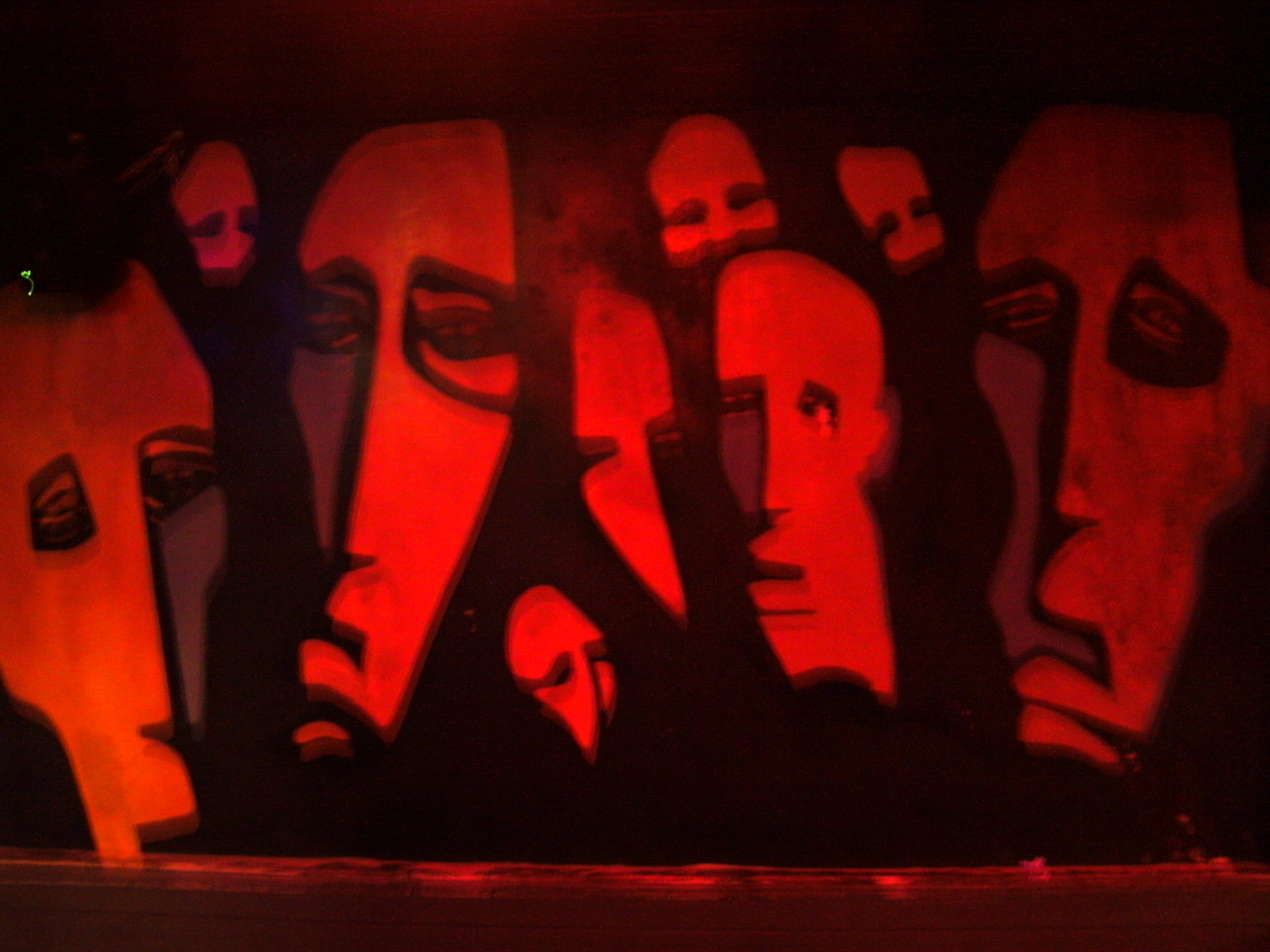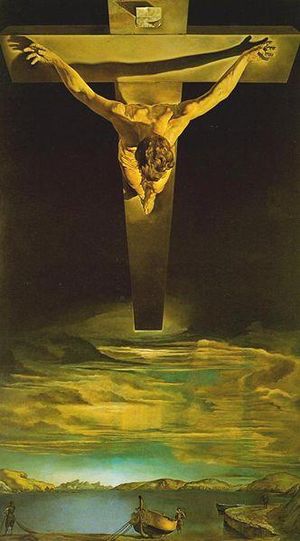by David Hamilton (December 2010)
There is confusion about what art is. Distinctions and classifications are needed to clarify it. First, the qualities that make something art are intrinsic, not external. It is in the artifice, the organising of elements, perspective, choice of colour etc that makes it art because the result is obtained by transforming reality and thus nature, through human imagination and realised by skill and technique.
An example of the difference between nature and art is when I point my camera and record natural phenomena. If I take a sunset it is reproducing nature and is not art but nature. But if I then use the zoom function, it has the effect of condensing the distance and thereby magnifying the gold or red which is moving from nature to art.
The contemporary age is one of excess of technique but lacks deep emotion and transcendent vision. Jeff Robb, who has a permanent exhibition at the Victoria and Albert, uses a method of lenticular sheets which are only sold by one firm which is in Switzerland. This is very clever and often fascinating but the subject matter is ordinary – nudes. His art is the cleverness of what he does with the subject but he does not transform the actual subject. Far from just pointing a lens at landscapes and urbiscapes Jeff needs specific equipment and ink cartridges to produce his results. Technique is important but should be guided by the vision not for its own sake or it becomes empty form.
The qualities that qualify a work as art are intrinsic to art in general but Art with a capital “A” has an elevated, sublime, purpose and is only realised by a high quality of conception and execution. A visual object or experience created through an expression of skill or imagination. The term art covers various media: painting, sculpture, printmaking, drawing, decorative arts, photography, and installation. The various visual arts exist within a continuum that ranges from prompting deep feeling or transcendent emotion and great skill to reproducing figures or landscape which have a mood and also prompt thought or feelings.
Technique or genius; skill or a knack.
English philosopher Michael Oakeshott in discussing rationalism in politics, made a distinction between learning technique and what he called traditional knowledge. The second is instinct and intuition. In this case we would describe it as talent or genius relayed through skill. Oakeshott describes two sorts of knowledge:
“The first sort of knowledge I will call technical knowledge or knowledge of technique. In every art and science, and in every practical activity, a technique is involved. In many activities this practical knowledge is formulated into rules which are, or may be, deliberately learned, remembered, and, as we say, put into practice; but whether or not it is, or has been, precisely formulated, its chief characteristic is that it is susceptible of precise formulation, although special skill and insight.
The second sort of knowledge I will call practical, because it exists only in use, is not reflective and(unlike technique) can not be formulated in rules… In every activity this sort of knowledge is also involved; the mastery of any skill, the pursuit of any concrete activity is impossible without it.”(1)
 In art, this equates to the distinction between natural talent or genius and the skill and technique which realises the vision and meaning. Soccer players show a high degree of skill and to great players it is natural but developed by coaching and practice, but there is no high conception.
In art, this equates to the distinction between natural talent or genius and the skill and technique which realises the vision and meaning. Soccer players show a high degree of skill and to great players it is natural but developed by coaching and practice, but there is no high conception.
Everyday art fills our ordinary lives with meaning and provides different feelings as they have different purposes. At Kimbolton school the murals on walls and ceilings by Pellegrini give a sense of grandeur and seriousness and create a suitable frame of mind for study. On occasion there are external factors that help prompt the feelings.
 A Liverpool pub, The Jacaranda, has a mural in the downstairs bar which John Lennon, and Stuart Sutcliffe, had a hand in painting when he was an art student, and this creates fascination and joy at the thought of someone so famous being part of it. The painting is well executed but not devoted to a high purpose, but conveys feelings because we know who was involved. In my last essay I referred to a strange painting on the inside of a cupboard in The Nags Head in Shrewsbury which, though not great art nonetheless produced feelings other than shock. A pub in Liverpool, the Peter Kavanagh has a very delightful mural based on Dickens characters in the snug-bar. The story is that an artist who was a regular customer in the 1930s could not afford to pay his tab for drinks on account, so painted the mural. It is delightful: it produces delight and merryment adds to the pubs character and raises it above the ordinary. (2)
A Liverpool pub, The Jacaranda, has a mural in the downstairs bar which John Lennon, and Stuart Sutcliffe, had a hand in painting when he was an art student, and this creates fascination and joy at the thought of someone so famous being part of it. The painting is well executed but not devoted to a high purpose, but conveys feelings because we know who was involved. In my last essay I referred to a strange painting on the inside of a cupboard in The Nags Head in Shrewsbury which, though not great art nonetheless produced feelings other than shock. A pub in Liverpool, the Peter Kavanagh has a very delightful mural based on Dickens characters in the snug-bar. The story is that an artist who was a regular customer in the 1930s could not afford to pay his tab for drinks on account, so painted the mural. It is delightful: it produces delight and merryment adds to the pubs character and raises it above the ordinary. (2)
The modern understanding of art derived from Abbe Batteux in the 1740s who regarded the essence as an “imitation of nature” and, principally, that it caused pleasure. They cause various mental states in the beholder. He defined these mental states as pleasure and the experience of beauty. Prior to this, individual modes of art were attached to various sciences like music to mathmatics but this is the skill not the purpose. Kant promoted a universal criteria to decide if something was Art. He used a geometric idea of patterns of shapes and lines. In The Critique of Judgement he developed the notion of beauty as the cause of the the mental state.
In the 20th century art lost its meaning and the confusion over what art is arose. Dada artist Marcel Duchamp implied that it is enough for an artist to deem something “art” and put it in a publicly accepted venue. It does not matter where you stick a urinal it is always a urinal with a specific non-artistic purpose. To say something becomes art because you put it in a gallery is very muddled thinking. I had an experience in the Ikon gallery in Birmingham. The only objects with artistic qualities were the water closets and washroom taps which had pleasing curves and smooth surfaces but were not art but objects for specific non artistic purposes.
 It is not the context of underpasses and bus shelters that makes or unmakes British street artist Banksy’s work as art or otherwise: it has no artistic subject matter and is just technique. Artistic subject matter is realised through qualities of artifice and held together by purpose which concentrates the artifice and technique to the goal of producing art. (3)
It is not the context of underpasses and bus shelters that makes or unmakes British street artist Banksy’s work as art or otherwise: it has no artistic subject matter and is just technique. Artistic subject matter is realised through qualities of artifice and held together by purpose which concentrates the artifice and technique to the goal of producing art. (3)
George Dickie and Arthur Danto held that works of art are objects connected to various social practices. This again turns on beauty as some objects like the taps or a motor car can be beautiful but because they are not linked to the art world are not art whereas a painting, say, is. This is to define art by social function. To Dickie its about being self-assigned but you can put a car where you like it is always a car and its function is different from a work of art even if it is beautifully designed. When artists begin to create they have a purpose in mind and to bring this into being they use appropriate technique. They do not take into account aerodynamics, say, or how fast water pours out or precisely where its trajectory will take it as these are not part of the purpose. Though they are to engineers and designers of those functional objects.
I noted in my last essay how Damian Hirst’s pickled shark was meaningless out of context because being dead it had lost its being which was when it was alive and swam and hunted in its natural habitat: in a glass tank it is out of context. The sea is a natural not artificial context.
This is the institutional theory of art which is a theory about the nature of art that holds that an object can only be art in the context of “the artworld”. Danto wrote in: The Artworld: “To see something as art requires something the eye cannot descry-an atmosphere of artistic theory, a knowledge of the history of art: an art world.” That has nothing to do with the work itself but where it is.
Nothing can make Duchamps “readymades” art because they were made for a specific non-artistic purpose. The theory does not change a pile of Brillo cartons in a supermarket into art, yet Danto thought if it was put in a gallery a substantive transformation took place. Andy Warhols pretentious Brillo Boxes (a pile of Brillo carton replicas, actually so they are doubley pretentious) are a pile of unartistic Brillo boxes wherever they are put.
Dickie’s institutional theory can be assessed from the definition in Aesthetics: An Introduction: “A work of art in the classificatory sense is 1) an artifact 2) upon which some person or persons acting on behalf of a certain social institution (the artworld) has conferred the status of candidate for appreciation.” What makes something art is the intention of producing traditional art through artifice and technique.
Tracey Emin and Damian Hirst have both declared works to be art because they say it is. They were promoted and financed by Saatchi who first declared their works art but he is not an artist. It is critics and elite art buyers who decide what is art and usually because of its commercial value but that is external to the work not intrinsic. They are right about the commercial value of objects but not about its classification as art because designating something as art because it has commercial value is to apply external or non intrinsic criteria as the standard of judgement. Many people are supposed to think they are Napoleon or important people but does that make them so?
This takes us back to Duchamps folly. This argument is that because he placed it in a gallery it became art. It is not assignation that makes art but the artifice guided by the purpose that is used to realise the vision and its meaning -it is intrinsic: it is in the finished work. Many works still fail to reach that goal. Picasso and Matisse also wanted to change art as they inherited it. Picasso: “Art is not the application of a canon of beauty but what the instinct and the brain can conceive beyond any canon. When we love a woman we don’t start measuring her limbs.” Well, alright he has dismissed proportion but that is only one possible component.
 When he became a Christian, Salvador Dali found an artistic subject and the inherent spirtuality of the subject gave him a fuller, more elevated vision and he painted the masterpieces of the twentieth century. He was a skilled draftsman who developed his skills of realisation by studying Renaissance masters. Much criticism of Dali was because he supported General Franco rather than the fashionable armchair Marxism of the orthodox Surrealists and art critics. Breton banned Dali from The Surrealist movement in 1941 and tried to ban his “Sistine Madonna” from the International Surrealism Exhibition in New York in 1960.
When he became a Christian, Salvador Dali found an artistic subject and the inherent spirtuality of the subject gave him a fuller, more elevated vision and he painted the masterpieces of the twentieth century. He was a skilled draftsman who developed his skills of realisation by studying Renaissance masters. Much criticism of Dali was because he supported General Franco rather than the fashionable armchair Marxism of the orthodox Surrealists and art critics. Breton banned Dali from The Surrealist movement in 1941 and tried to ban his “Sistine Madonna” from the International Surrealism Exhibition in New York in 1960.
His fascination with the hypercube a four-dimensional cube and unfolding of a hypercube is featured in “Corpus Hypercubus” which changes the traditional form but it is still recognisable and we know what it represents. His “Last Supper” and “The Christ of St.John of the Cross” (left) are the masterpieces of the twentieth century. This brings us to the essence of great Art: genius and inspiration.
Contemporary painters and makers of installations show contempt for the audience and do not work for the public good. They seek a response but it is a negative response. They are not geniuses and have to shock to get noticed. In fact they are not really artists – but purveyors of clever tricks without deep meaning. Art is communication but contemporary art fails to communicate because of a disjuncture between subject and beholder, form and purpose.
Thomas Carlyle’s famous remark utilised by egalitarians that “Genius is an infinite capacity for taking pains” is that capacity is attendent upon genius to realise the vision but not the imagination which is the creator of the vision. The taking of pains follows the original impulse.
The indefinable knack which is intuitive practice called genius. This is artistic judgement in the practice of painting when one just knows instinctively what to put or where. This knack is the artistic eye, artistic judgement and it is a non rational process – it is intuition or instinct and it is this that trained and developed technique realises.”
I think John Dryden captures it :”But genius must be born, and never can be taught.” It is the technique that is taught not the genius which is inborn as the qualities that make a work art are intrinsic to the work, not external nor contingent on where the work is put.
_________________________________
(1) http://dilettantescholar.blogspot.com/2008/05/michael-oakeshott-rationalism-in.html
(2) Maud Bodkin. Archetypal Patterns in Poetry
(3) http://www.flickr.com/photos/paddypix/3956312434/
To comment on this article, please click here.
To help New English Review continue to publish critical and informative articles such as this one, please click here.
If you enjoyed this article and would like to read more by David Hamilton, please click here.
- Like
- Digg
- Tumblr
- VKontakte
- Buffer
- Love This
- Odnoklassniki
- Meneame
- Blogger
- Amazon
- Yahoo Mail
- Gmail
- AOL
- Newsvine
- HackerNews
- Evernote
- MySpace
- Mail.ru
- Viadeo
- Line
- Comments
- SMS
- Viber
- Telegram
- Subscribe
- Skype
- Facebook Messenger
- Kakao
- LiveJournal
- Yammer
- Edgar
- Fintel
- Mix
- Instapaper
- Copy Link






